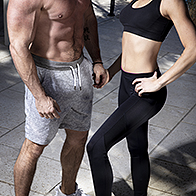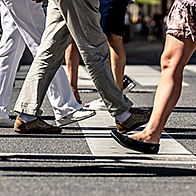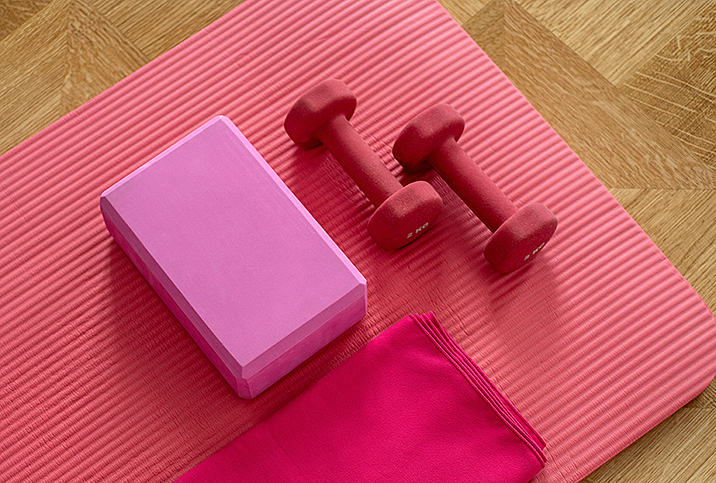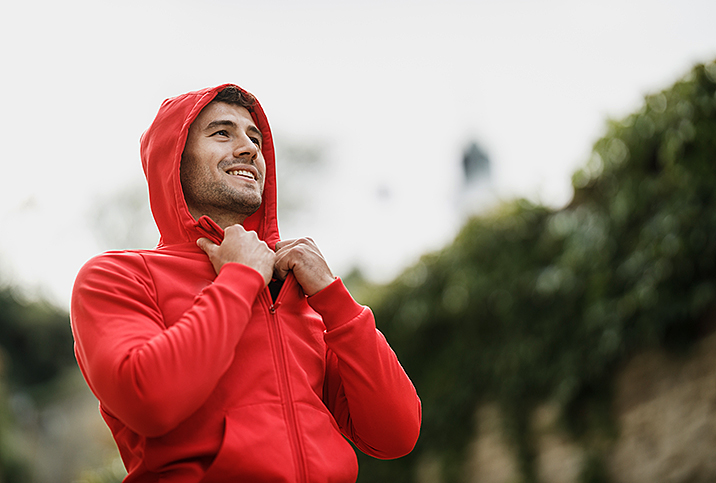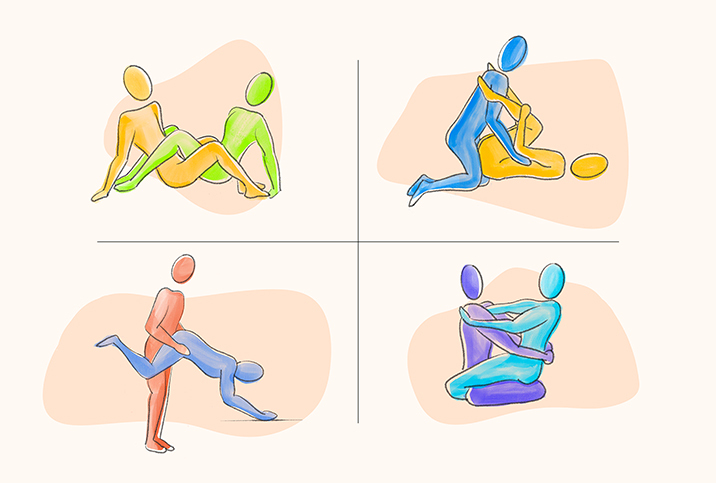Workout Apps for the Over 60s

It can feel overwhelming to scroll through the thousands of options in an attempt to figure out which workout apps are best—more accurately, best for you. App Annie's State of Mobile Report for 2021 estimated there were 47,000 health and fitness apps in the Google Play Store and 24,000 more in the Apple App Store. It's been further projected that 86 million people in the United States use health and fitness apps.
There are apps that feature workout videos, apps that help you plan and track your workouts, apps for walking and running, and apps designed for yoga and meditation. There are basic timer apps for interval training, apps that connect you directly with personal trainers or fitness professionals, and apps that integrate with other wearables to track your biometrics, such as heart rate.
Whew! A person can get tired even figuring out where to begin.
Technically, any app may work for any given person in a particular demographic. After all, there are some very fit 70-year-olds and some extremely sedentary 20-year-olds. But people in the over 60s age group may have specific issues they want to keep in mind when choosing an app: health concerns or a significant time gap since you last actively worked out. Hopping into a workout in your 60s after years of being inactive isn't the same as hopping back in during your 20s or 30s. Your body needs a little extra grease on the wheels to get things turning the way they used to.
So if you're still looking for a workout app and you haven't been put off yet, here's what to keep in mind.
Health and fitness for anyone over 60
Just because you're getting older doesn't necessarily mean your body is unfit or unhealthy. If you've always prioritized staying active, you may be pleasantly surprised to find you're capable of tackling almost any program available. That said, most people do become more sedentary with age, and as the saying goes, you have to use it or lose it.
If you haven't regularly been training your heart, lungs and muscles to keep them strong and flexible, you've likely lost a beat (or two or three) since your last regular workout routine. The good news is, that you can get those lost beats back. You just have to do it in a way that's safe and gradual and addresses the needs most common to an older demographic.
"Bone density and lean muscle mass decrease with age, especially without a structured exercise and nutrition plan," said Melissa Rodriguez, a NASM-certified personal trainer and NSCA-certified strength and conditioning coach based in Boston. "Because metabolism and activity level often slow down with age, maintaining a healthy body composition becomes more challenging."
She emphasized that this demographic needs to look for apps that offer well-rounded exercise options, which can help improve lean muscle mass and bone health as well as maintain or improve body composition and flexibility.
Rodriguez isn't alone in this recommendation.
"A fitness app should have a variety of options for people in this age group, as needs vary widely," said Amy Hoover, a doctor of physical therapy (D.P.T.) and the owner of APHysio, an in-home physical therapy business in Medina, Ohio. "A well-rounded fitness routine includes options for lower impact, cardiovascular, stretching, and flexibility and resistance-based training."
An app that offers a variety of workouts makes it possible for anyone of any health background to find something that works for them.
"Aging brings many physical changes that may affect your ability to begin or continue a fitness journey," said Hoover, who is also the resident doctor of physical therapy for P.volve, a company whose workout method is rooted in functional movement. "Some of the conditions that may arise after age 60 are joint arthritis, bone density loss, poor posture, decreased muscle mass, balance issues and decreased muscle flexibility. The good news is that all of these can be mitigated with the right type of movement and exercise."
Identifying the right app for you
First, you need to think about your own personal goals and challenges when selecting an app.
"There are people over the age of 60 who can run sub-four-hour marathons, and then there are people over 60 with diabetic neuropathy or previous injuries that may hinder their movement abilities," said Ashley Plummer, R.N., who earned a doctorate in nursing practice and is an OB-GYN nurse practitioner at the University of Colorado. "What is the person looking for? Are they looking to track their fitness? In which case, I recommend apps like MyFitnessPal or MapMyWalk. Or are they looking for workouts specific to their needs?"
MapMyWalk has versions for running, cycling and general fitness.
Knowing the answer to these questions can help you narrow your options. But it's not the only thing to consider. The educational value of the app you choose should weigh heavily in your selection.
"An app that provides education and explanations within each workout can help individuals better understand how and why they can benefit from specific exercises and guide them to make more informed decisions based on their own needs," said Maeve McEwen, a New York-based lead trainer for P.volve. Some apps even allow for interaction with trainers and other experts, which provides for a back-and-forth conversation if you have questions about an exercise or program.
It's important you're honest with yourself about what you do and don't know, and what type of accountability or assistance you think you might need. The benefits of apps, as Plummer pointed out, are their flexibility and ease of access to pre-planned workouts. But if you dive into a program without the knowledge or ability to perform the exercises correctly, you could be setting yourself up for injury.
This is a significant issue for people in an older demographic. Even if you were quite active in your younger years, and you have strong knowledge about proper form, your body simply may not move quite the way it used to. For instance, if you now lack the flexibility to perform a perfect squat, you may inadvertently "cheat" your form, which could risk injury to your body. Many people assume they're performing an exercise correctly, but under the direction of a personal trainer, they soon realize adjustments they need to make.
"The downside of fitness options being free and on-demand is injury," Plummer said. "Anyone looking to start a new fitness routine should be sure to consult with a physical therapist or a trainer before beginning any weightlifting regimen to ensure proper form."
In such a case, you may want to look for apps that connect you with a trainer and allow for personal interaction and assistance to master proper form and progress at a personalized pace. Or you might want to work directly with a personal trainer at a gym or in your home, but use an app with additional workouts to supplement the one-on-one interaction.
A few solid apps and program options
Choosing an app is really up to you, so it's always worthwhile to ask your trainer, physical therapist, or even your doctor or friends if they have apps they use and like. You may be able to connect with your friends and compete or offer accountability through some apps, which may or may not be something you enjoy.
If you're interested in tracking your specific activity or biometrics with a wearable band or watch, you may want to look at apps for the Fitbit, Apple Watch or similar products. But tracking these metrics is not a requirement to improve your health, so don't worry if it's not for you.
"Integration with a fitness watch is a bonus, but not necessary to enjoy a good fitness app," Hoover explained. "The watches are designed to monitor your biometrics to help you understand where your workout is taking you. For example, if you're looking for a cardiovascular workout, the watch can tell you when you hit that heart rate zone and even give details on how long you stayed there."
But even if you don't have this information in front of you, if you're pushing yourself during your workouts, chances are you're still hitting those zones and enjoying the results. So if you'd rather exercise without obsessing over the details, there's no need to worry.
It's better to download a couple of apps and get started rather than spend too long worrying about choosing the 'wrong' app.
As far as other good apps for the over-60 crowd, Hoover specifically recommended YouTube as a good option because of the sheer volume and variety of channels with expert providers.
"One of my all-time favorite YouTubers for the over-60 crowd is Caroline Jordan Fitness," she said. "She offers a ton of low-impact workouts for free on her channel and offers specialized services for diabetics and people with lower-extremity injuries on her website. I personally used many of her workout videos when I broke my ankle and had to take a break from my regular running routine."
Hoover also pointed to Fitness Blender as an option for thousands of free workout videos.
"It's super easy to use," she said. "If you click ‘filter' on their videos section, you can choose low-impact, the body part you want to work out, or even narrow workouts down to Pilates or yoga."
Hoover and McEwan also mentioned the app developed by their own company, P.volve.
"The P.volve method is a functional movement-based fitness method that offers excellent fitness routines with a large variety of specialty content," Hoover said. "The app offers workouts and series that target many of the specific needs of people over 60 and is now available to stream through select Medicare fitness programs at no additional cost."
Rodriguez had a few app suggestions for seniors.
"The Mindbody app is a great way to find exercise classes and services with its ability to search for specific modalities," she said. "Another option is Silver Sneakers Go, which is an app specifically designed for older adults. The platform offers workouts tailored to that age group, along with reminders and notifications for exercise and progress-tracking."
Finding a workout app that's a perfect fit is going to be an unenviable task. But with a little research, personal recommendations and some honest personal goal-setting, you'll soon narrow your choices and make some decisions. It's better to download a couple of apps and get started rather than spend too long worrying about choosing the "wrong" app. Once you've tried a few, you'll soon figure out what you like and what you don't, and that should help guide you to your next download.







